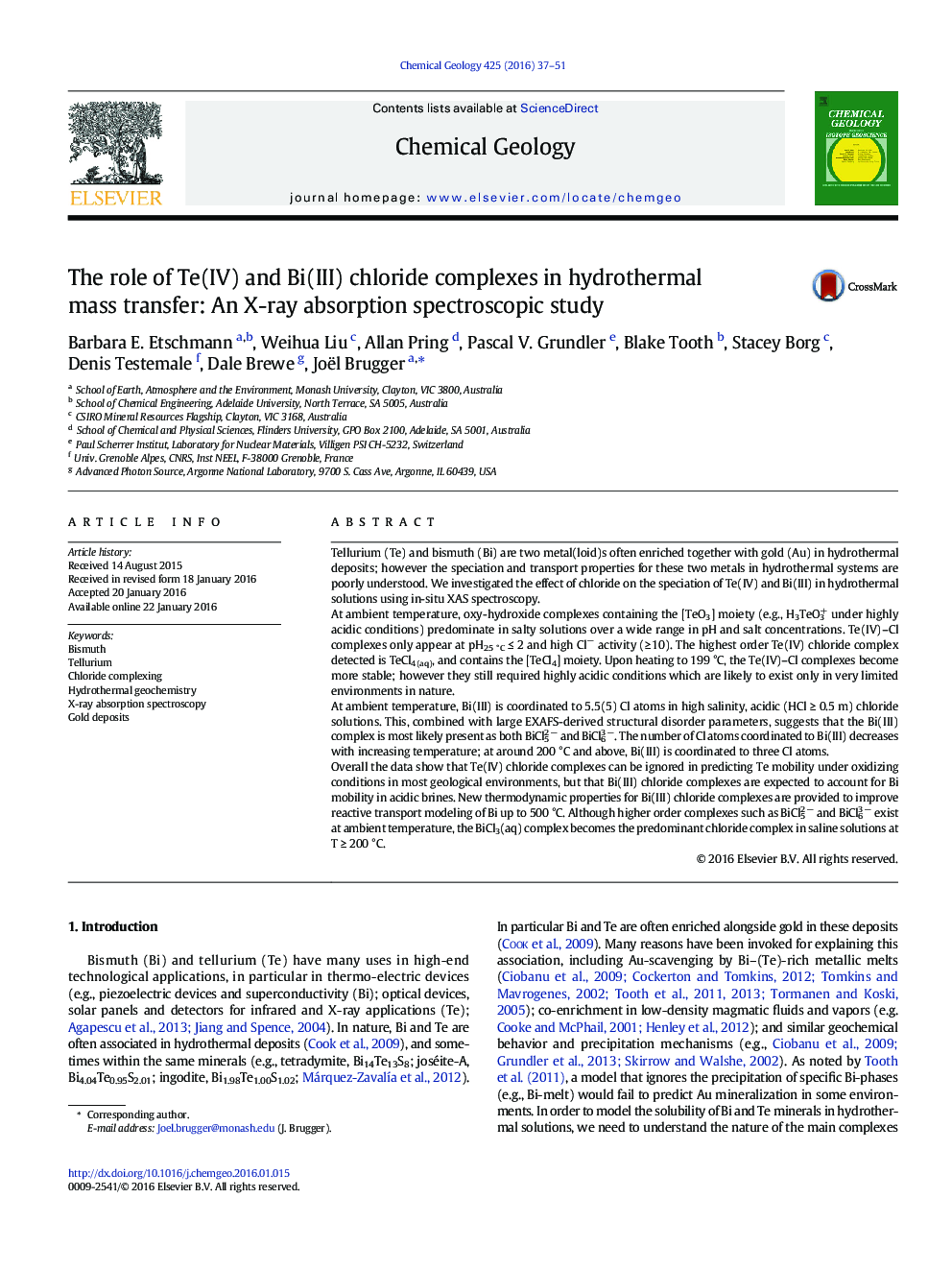| کد مقاله | کد نشریه | سال انتشار | مقاله انگلیسی | نسخه تمام متن |
|---|---|---|---|---|
| 6436155 | 1637549 | 2016 | 15 صفحه PDF | دانلود رایگان |

- XANES and EXAFS reveal the speciation of Te(IV) and Bi(III) in chloride brines.
- TeCl4(aq) is the highest order Te(IV) chloride complex.
- Te(IV) chloride complexes are stable only at high pH and not important in nature.
- BiCl3(aq) is the main Bi(III) complex in chloride brines at T â¥Â 200 °C.
Tellurium (Te) and bismuth (Bi) are two metal(loid)s often enriched together with gold (Au) in hydrothermal deposits; however the speciation and transport properties for these two metals in hydrothermal systems are poorly understood. We investigated the effect of chloride on the speciation of Te(IV) and Bi(III) in hydrothermal solutions using in-situ XAS spectroscopy.At ambient temperature, oxy-hydroxide complexes containing the [TeO3] moiety (e.g., H3TeO3+ under highly acidic conditions) predominate in salty solutions over a wide range in pH and salt concentrations. Te(IV)-Cl complexes only appear at pH25 °C â¤Â 2 and high Clâ activity (â¥Â 10). The highest order Te(IV) chloride complex detected is TeCl4(aq), and contains the [TeCl4] moiety. Upon heating to 199 °C, the Te(IV)-Cl complexes become more stable; however they still required highly acidic conditions which are likely to exist only in very limited environments in nature.At ambient temperature, Bi(III) is coordinated to 5.5(5) Cl atoms in high salinity, acidic (HCl â¥Â 0.5 m) chloride solutions. This, combined with large EXAFS-derived structural disorder parameters, suggests that the Bi(III) complex is most likely present as both BiCl52 â and BiCl63 â. The number of Cl atoms coordinated to Bi(III) decreases with increasing temperature; at around 200 °C and above, Bi(III) is coordinated to three Cl atoms.Overall the data show that Te(IV) chloride complexes can be ignored in predicting Te mobility under oxidizing conditions in most geological environments, but that Bi(III) chloride complexes are expected to account for Bi mobility in acidic brines. New thermodynamic properties for Bi(III) chloride complexes are provided to improve reactive transport modeling of Bi up to 500 °C. Although higher order complexes such as BiCl52 â and BiCl63 â exist at ambient temperature, the BiCl3(aq) complex becomes the predominant chloride complex in saline solutions at T â¥Â 200 °C.
Journal: Chemical Geology - Volume 425, 1 May 2016, Pages 37-51